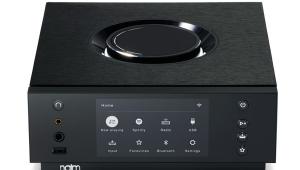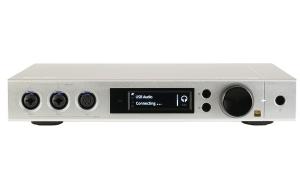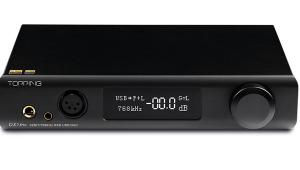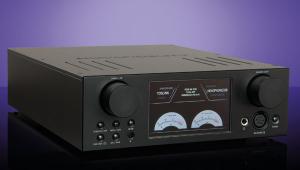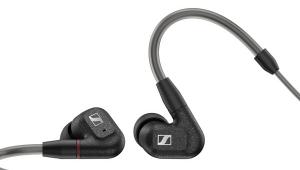T+A HA 200
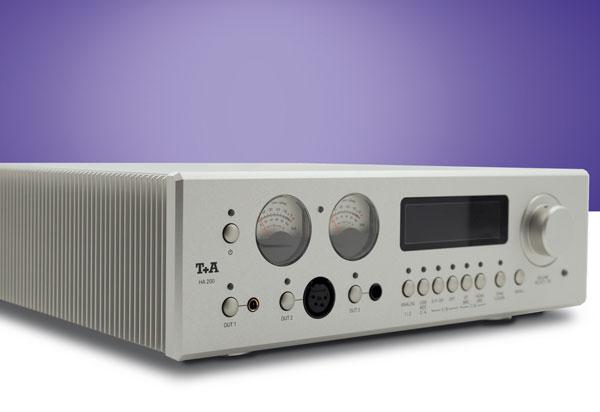
 Taking your first tentative steps into a previously unknown arena can be a daunting prospect, particularly if everything that has come before has displayed the same level of pedigree that German company T+A prides itself on. But then if you’re going to explore new directions, every now and then you’re going to have to take the plunge and start out on your journey. Having already come up smelling of roses after diving headfirst into the world of headphones with its recent Solitaire P planar magnetic offering, the company is following up with its first ever foray into headphone amplifiers, in the shape of the beautifully designed HA 200, throwing in network connectivity and a DAC for good measure. If you’re going to give it a go, you might as well come out all guns blazing..
Taking your first tentative steps into a previously unknown arena can be a daunting prospect, particularly if everything that has come before has displayed the same level of pedigree that German company T+A prides itself on. But then if you’re going to explore new directions, every now and then you’re going to have to take the plunge and start out on your journey. Having already come up smelling of roses after diving headfirst into the world of headphones with its recent Solitaire P planar magnetic offering, the company is following up with its first ever foray into headphone amplifiers, in the shape of the beautifully designed HA 200, throwing in network connectivity and a DAC for good measure. If you’re going to give it a go, you might as well come out all guns blazing..
Priced at £4,800, the Solitaire P is the sort of product our Exotica section was designed for, as – when partnered with the HA 200 – the whole kit and caboodle will set you back £11,500. For that sort of money you’ll have to be pretty serious about your headphone listening.
Though perhaps not offering the same sort of dimensions as some of T+A’s other hefty components, the HA 200 still has the same sort of rock-solid build quality to it. The thick alloy front fascia has been machined from billet, while the side panels – which form the heatsinks – are extruded from aluminium. Available in a choice of silver or black finishes, the result is that although relatively compact – at least in T+A terms – it still weighs in at a hefty 6.5kg.
Despite being designed to partner the Solitaire P, this amp by no means precludes the use of other non-T+A cans. Consequently outputs including a standard 6.35mm jack, balanced 4.4mm Pentaconn and four-pin XLR socket cater to a wide range of listeners. Each output has its own individual selector so you can have three headsets connected at once, although you’ll only actually be able to use two of them at a time. There are six impedance settings to take your pick from with 8, 12, 18, 25, 40 or 80ohm catered for. Additionally, there are Minimum, Low, Medium and High loudness settings – none of which impact on the overall gain (+14.1dB balanced in/SE out) or maximum power output of the HA 200. Obviously, the same cannot be said for the impedance settings.
Connectivity takes the form of unbalanced RCA and balanced XLR inputs, two coaxial and two optical digital ins, AES/EBU and BNC sockets, plus an asynchronous USB-B port for connection to a computer. Bluetooth is onhand for wireless hookup, offering compatibility with aptX HD, SBC and AAC codecs, while a port for an antenna is provided on the back panel. Beyond the headphone connections, there are no analogue outputs.
There are also some familiar sockets that are not what they first seem. The Ethernet port and second USB-B input are included, says T+A, for future devices further down the line, while two more RJ45-style Ethernet ports labelled for the company’s E2 Link system are there for the same reason. A USB-A port is also onhand, but is for charging purposes (most notably the rechargeable FM8 remote control that comes bundled) and will not support thumb drives. On the subject of futureproofing, there is the upgrade option of an HDMI ARC board, offering two in and one output, allowing for LPCM stereo sound from your Blu-ray player to be fed to the HA 200 and on to your TV.
Like previous T+A digital products that have come before it, the DAC section uses separate signal paths for LPCM and DSD datastreams. The former uses a ‘Double-Differential Quadruple-Coverter’ with 32-bit Sigma-Delta converters per channel, while the latter employs T+A’s proprietary ‘True-1-Bit’ – handling the single-bit signal in native form all the way up to DSD1024.
The USB-B port will accept a wide variety of formats up to 32-bit/768kHz and DSD1024. Mac users are limited to a maximum of DSD256, while Windows computers will need to be equipped with a suitable driver.
T+A’s traditional choice of digital filter settings include two linear-phase FIR types and two Bezier types – both of which are interpolative – plus two new NOS (no oversamplng) options. The combined Bezier/IIR filter is a minimum phase type with hardly any pre-ringing, while the pure Bezier option has hardly any pre- or post-ringing but has an early treble roll-off with CD/48kHz media. We spend a good couple of hours playing with them all before coming to the conclusion that there is no ‘fits-all’ solution and you’ll be best off experimenting to see what’s right for your setup. While you’re at it, you might want to play with the bandwidth setting that can be switched between a 60kHz low-pass response and a 120kHz wide option said to give “more spatial music reproduction”. There are also balance, bass and treble controls alongside a variable loudness mode for when listening at low levels. And if all of that isn’t enough to keep you occupied, you can always experiment with the crossfeed facility, which bleeds the signal between the channels for a more speaker-like sense of stereo imaging.
Sound quality
Boasting T+A’s HV (High Voltage) technology and with separate power supplies for the digital and analogue sections, it won’t come as that big a surprise to learn that the HA 200 can comfortably drive pretty much any headphone you care to partner it with. Our tests take in everything from the aforementioned T+A Solitaire P to Oppo’s PM-1 (both
of which utilise planar magnetic technology) throwing in B&W’s closed-back P9 Signature (HFC 421) and Focal’s wide-open Clear (HFC 439) for good measure.
Regardless of the cans partnering it, the HA 200 doesn’t hesitate to drive them in an entirely convincing manner, irrespective of whether it’s using conventional unbalanced or balanced connectors.
Kicking off listening with Dana Zemstov and Anna Fedorova’s Silhouettes in DXD, highlights why – if you can afford it – spending the thick end of £11,000 on a T+A headphone setup is a very good idea indeed. It’s not so much the confident weight and delicacy of the piano or the timbre and bite of the accompanying viola, but more the open, spacious yet intimate acoustic that’s captured in the recording.
Changing over to Bowers & Wilkins’ P9 Signature sees a darker hue brought to the music, but the way that the HA 200 keeps in check what can be a slightly lush listen is still very commendable. The result is an altogether sprightlier sound without losing any weight.
Regardless of whether it’s driving the P9 Signature or Focal Clear, the HA 200 effortlessly creates an entirely coherent, ‘out-of-the-head’ listening experience. And all without having to experiment with the crossfeed control, which can make things a bit confused if not employed carefully. Listening to the Vasily Petrenko and Oslo Philharmonic’s recording of Rimsky-Korsakov’s Scheherazade, it’s impossible not to be impressed by the sheer force of the large orchestra, persuasively recorded to emit a free-breathing, uncompressed and hugely dynamic sound.
Over the years, the Oppo PM-1 has been a favourite go-to option for testing headphone amps, but it’s difficult to think of anything that’s driven it with such authority that it takes on even greater weight or percussion with effortless ease. All of which is ideal for material like Snarky Puppy’s Live At The Royal Albert Hall with its large musical forces, tumbling rhythms and palpable audience presence.
Meanwhile, the jangly pop of Sports Team’s Deep Down Happy grabs the attention from the first note, thanks to its deft mixture of power and flexibility to make every lyric crystal clear while allowing the music to flow.
Even Ella Fitzgerald’s 1956 Live At Zardi’s sweeps the listener up as the immediacy of the recording shines through the atmosphere of the evening. It’s powerful stuff alright.
Conclusion
While it’s all too easy to quibble about the lack of built-in network and USB HDD playback or analogue outputs – especially given the price tag – it’s perhaps better to focus on what the HA 200 does, and does to exceptional effect. Very few headphone amplifiers are able to take you on such an epic sonic journey when you slip on your cans, and combined with a seemingly endless array of tweaking options and flexibility, it’s very difficult to see this as anything other than the perfect option for those that take their headphone listening seriously. Just because it’s high-end, doesn’t mean it doesn’t know how to have fun. HFC
DETAILS
Product: T+A HA 200
Type: Network-attached headphone amplifier
FEATURES
● Headphone outputs: 6.35mm; balanced 4.4mm Pentaconn; four-pin XLR socket
● Inputs: RCA; balanced XLR; 2x coaxial; 2x optical; AES/EBU; BNC; USB-B
 |
Inside this month's issue:
Q Acoustics 3020c standmount loudspeakers, Perlisten R10s active subwoofer, Quad 33 and 303 pre/power amps, Acoustic Solid Vintage Full Exclusive turntable, newcomer Fell Audio Fell Amp and Fell Disc and lots, lots more...
|
